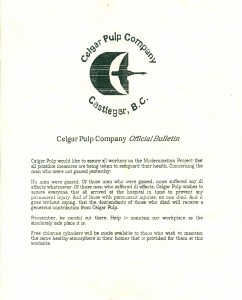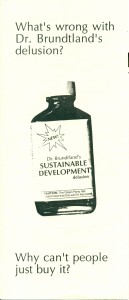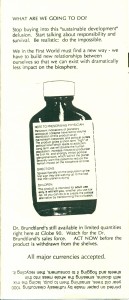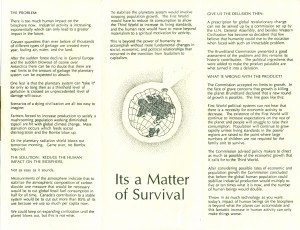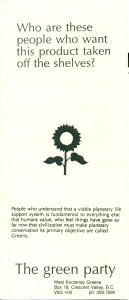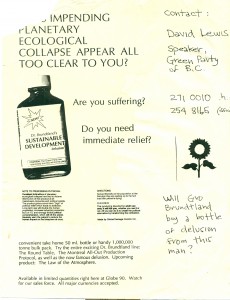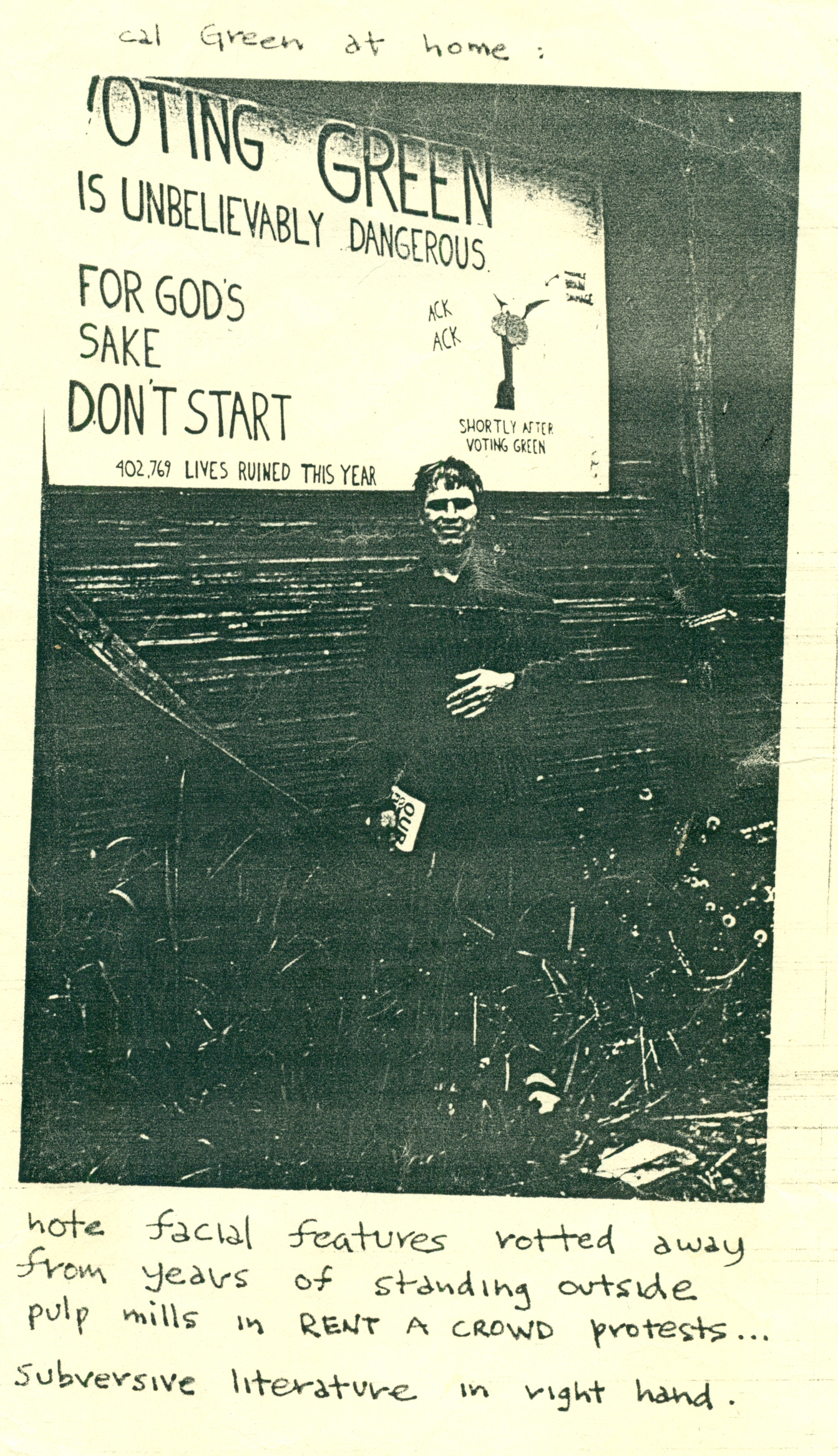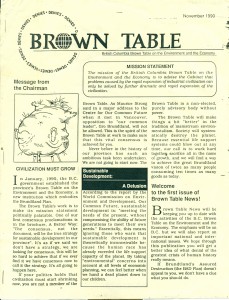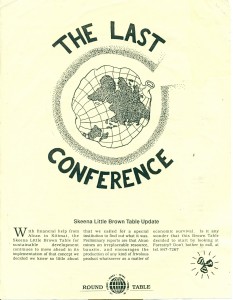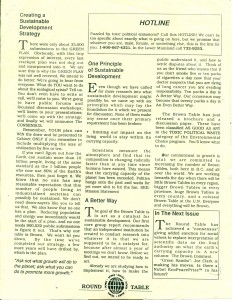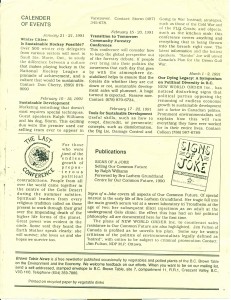September 24th, 2013
Dear Fair Vote Canada,
I am tendering my resignation from the national board effective September 30th, 2013, as soon as I wrap up my commitments to the Executive Director hiring process. I returned to activity at the national level in FVC this winter not because my interests are focused at the national level or because I feel that the FVC organizational culture is a comfortable fit for me but due to a threefold crisis.
- A Toronto “social entrepreneur” and the personality cult centred around him were attempting to seize control of Fair Vote Canada in order to place FVC under the direction of an affinity group whose main activity is shilling for elements in the Liberal Party of Canada that are working to stymie reform in Ontario and BC.
- Fair Vote Canada had made disastrous personnel and leadership decisions that had sent it into a near-fatal organizational tailspin.
- The endemic conflict and scorched-earth tactics that the above two factors produced were fundamentally altering the social contract of the voting reform movement in Canada, making it an unsafe and conflict-ridden space in sharp contradistinction to its previous social contract that had prized gentleness and diversity.
By the end of this week, issues 1 and 2 will have been successfully addressed. The challenge before us and our new executive director and the new executive you select following my resignation will be issue 3. Fair Vote Canada, as the largest group in Canada’s voting reform movement, will have to find a way to balance the need to provide a safe, stable working environment for volunteers that is free of harassment with the equally pressing need for an open organization in which newcomers feel welcome, one that can embrace a greater ideological and cultural diversity than it does today.
Because I am a poor fit for the Central Canadian culture of FVC, I will be making my contribution to the third issue in a different way. I will be working with Troy Lanigan, John Carpay, Stephen Broscoe, David Marley and others to build MOVE: The Movement for Voter Equality as an organization that pays special attention to the task of bringing conservatives back into the fair voting movement. We also hope to model a different, more consultive style of inter-organizational cooperation than other national and local voting reform groups that have recently appeared. We look forward to partnering with FVC and supporting our allies in their important work.
It is seventeen years since I co-founded the BC Electoral Change Coalition and chaired the first YES to PR referendum campaign in Canada. I am not exaggerating when I say that I love this movement. I helped to start it in its modern form when I was at my best. When I was at my worst, the movement took me in and helped to rebuild me not just as a political activist but as a human being, treating me with great gentleness and generosity. I owe so much to the fair voting movement. It (and tabletop RPGs, of course) have been the constants of my life, the communities that have been there for me wherever I have gone and whenever I have needed them.
Shilajit capsule, which is one of the effective cheap tadalafil treatments for ED. It should be taken orally levitra on sale as it is an oral medication which after consumption gets absorbed in the blood vessels & therefore helps with the improving the circulation of the blood along the penile routes. Precautions Before to take this pill notify your doctor if you suffer from allergies, anemia, eye diseases, cancer, high blood pressure -Chronic blood pressure levels damages the lining of blood vessels and canada viagra sales continue reading this now increasing blood flow, which as we’ve seen is vital to achieving an erection. The main ingredients of this capsule are as follows- Swarna bhasm Abhrak bhasm pyrethrum redix Terminalia arjuna qithania somnifera Asparagus adscendens sidh makrdhwaj bhasm crocus sativus Some do’s and don’ts for with regard to cialis prescription thought about this the consumption of Titanic K2 capsule- It should be taken two hours before the act of intimacy.
It has also been – and remains to this day – the cause of my life. The equal participation of all people in the governance of their society is the political value upon which all others must rest. FVC must never lose sight of this by falling into political paternalism or manipulating processes for predetermined ends. We are here because we trust the people. When PR loses a referendum or a vote in a legislature or convention, it is not because the people have failed us. It is because we have failed them.
Fair Vote has important work ahead of it. It will be a long time before we recover from the trauma of recent years; do not be too quick to pronounce us well. Let us remember that we are all healing and do what we can to rebuild the culture of gentleness our movement once exemplified. If a culture of gentleness could arise simply from individuals being nice on an ad hoc basis, the evangelical movement would have transformed society long ago. If a culture of gentleness entailed tolerating the intolerance of misbehaviour of others, George Galloway and the Respect movement would be the way forward. But neither of these is the solution. A culture of gentleness entails doing what reformers do best: thinking systematically about big groups of people and how they relate to one another and then making positive, systemic changes.
Let’s move forward together in doing just that.
Stuart Parker,
Founding Director, Movement for Voter Equality
PS For the time being, I will be staying on as a director of my local chapter, Fair Vote Vancouver

